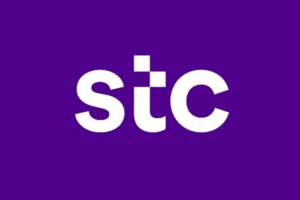 Deutsche Telekom’s T-Mobile USA and MetroPCS have announced plans to merge with DT owning 74{e1f18614b95d3cd6e4b3128e1cd15d99b042a60a5a19c19b7a8e07e7495efa10} of the combined company and MetroPCS the remaining 26{e1f18614b95d3cd6e4b3128e1cd15d99b042a60a5a19c19b7a8e07e7495efa10}. The deal will strengthen T-Mobile’s position in the US, increasing total subscribers by 28{e1f18614b95d3cd6e4b3128e1cd15d99b042a60a5a19c19b7a8e07e7495efa10} to 43 million and increasing market share from 10{e1f18614b95d3cd6e4b3128e1cd15d99b042a60a5a19c19b7a8e07e7495efa10} to 13{e1f18614b95d3cd6e4b3128e1cd15d99b042a60a5a19c19b7a8e07e7495efa10}. More importantly the deal would strengthen their position in the value segment where both companies are focused, with the new company having 23{e1f18614b95d3cd6e4b3128e1cd15d99b042a60a5a19c19b7a8e07e7495efa10} of the US prepaid market, given T-Mobile USA’s share of 20{e1f18614b95d3cd6e4b3128e1cd15d99b042a60a5a19c19b7a8e07e7495efa10} and MetroPCS with 3{e1f18614b95d3cd6e4b3128e1cd15d99b042a60a5a19c19b7a8e07e7495efa10}
Deutsche Telekom’s T-Mobile USA and MetroPCS have announced plans to merge with DT owning 74{e1f18614b95d3cd6e4b3128e1cd15d99b042a60a5a19c19b7a8e07e7495efa10} of the combined company and MetroPCS the remaining 26{e1f18614b95d3cd6e4b3128e1cd15d99b042a60a5a19c19b7a8e07e7495efa10}. The deal will strengthen T-Mobile’s position in the US, increasing total subscribers by 28{e1f18614b95d3cd6e4b3128e1cd15d99b042a60a5a19c19b7a8e07e7495efa10} to 43 million and increasing market share from 10{e1f18614b95d3cd6e4b3128e1cd15d99b042a60a5a19c19b7a8e07e7495efa10} to 13{e1f18614b95d3cd6e4b3128e1cd15d99b042a60a5a19c19b7a8e07e7495efa10}. More importantly the deal would strengthen their position in the value segment where both companies are focused, with the new company having 23{e1f18614b95d3cd6e4b3128e1cd15d99b042a60a5a19c19b7a8e07e7495efa10} of the US prepaid market, given T-Mobile USA’s share of 20{e1f18614b95d3cd6e4b3128e1cd15d99b042a60a5a19c19b7a8e07e7495efa10} and MetroPCS with 3{e1f18614b95d3cd6e4b3128e1cd15d99b042a60a5a19c19b7a8e07e7495efa10}
T-Mobile USA has made it clear the deal is all about LTE, with the combined spectrum assets of the companies providing a path to 2 x 20MHz for LTE in many markets, double T-Mobile USA’s current plans for 2 x 10MHz for LTE. In addition T-Mobile USA says MetroPCS customers will be upgraded from CDMA to a common LTE network as they upgrade their handsets, highlighting plans for a rapid migration from CDMA to LTE. This reduces but does not eliminate one of the major challenges of the deal which is T-Mobile USA will have to migrate two major technology families – CDMA and WCDMA – to LTE rather than just one. At the same time, it will have to refarm (transition) its combined spectrum holdings from CDMA and WCDMA to LTE. This all adds up to a hugely complex and challenging migration that will take significant time and investment, and which is a major risk for derailing the benefits of the deal which the companies say includes $6-7 billion in expected cost savings.
The deal could also spark a final wave of consolidation in the US mobile market, which has been in limbo on the M&A front since regulators blocked AT&T’s bid for T-Mobile USA last year. Sprint also reportedly moved to acquire MetroPCS earlier this year but was blocked by its board, and it now appears too late for Sprint to make a counter-offer for MetroPCS. So it may turn its attention to Leap Wireless and/or US Cellular, the next-largest operators in the US after MetroPCS – both have near 6 million subscribers compared to MetroPCS with 9 million, and like MetroPCS they use the same CDMA technology as Sprint. However these smaller deals could complicate any potential merger between T-Mobile USA and Sprint, which has long been rumoured as it would put the combined group on relatively level footing with AT&T and Verizon Wireless. This is first because of the integration challenges both companies would be facing, and second because they would be larger players before they merged, which would make it tougher to gain regulatory approvals. However AT&T currently has 33{e1f18614b95d3cd6e4b3128e1cd15d99b042a60a5a19c19b7a8e07e7495efa10} of the US mobile market and Verizon 31{e1f18614b95d3cd6e4b3128e1cd15d99b042a60a5a19c19b7a8e07e7495efa10}, so the even after smaller deals a combined T-Mobile USA and Sprint would also have around one-third of the market, and would be much stronger competition for AT&T and Verizon Wireless.
For Deutsche Telekom its T-Mobile USA acquisition of MetroPCS shows it is committed to investing to improve its scale and strength in the US market, after its attempt to exit the US last year by selling T-Mobile USA to AT&T was blocked by regulators. However Deutsche Telekom will need to do more in future given that even after the acquisition of MetroPCS it will still have less than half the market share of the two dominant players.
May 19, 2025











